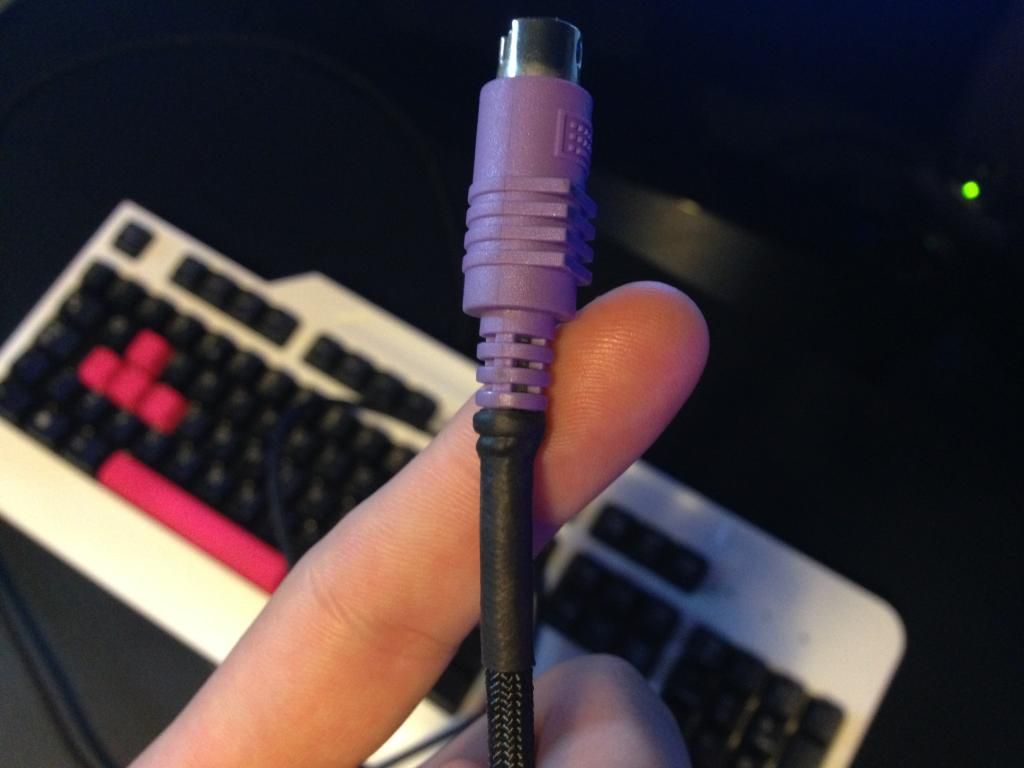Sometime last year my sister came home from school with a keyboard with Russian stickers on the keys. I didn't think much of it untill I saw that it was a PS2 keyboard. As I was, at the time, having trouble getting into the bios I thought it would be a good idea to take the keyboard and use it as a secondary keyboard for when I needed to access the bios quick and couldnt wait for my USB keyboard to be picked up.
Fast forward to today when, again, I got bored (last time I got bored I put my watercooling rad in a pan of water ) and decided that this approximately 15 year old keyboard could do with a clean and a lick of paint.
) and decided that this approximately 15 year old keyboard could do with a clean and a lick of paint.
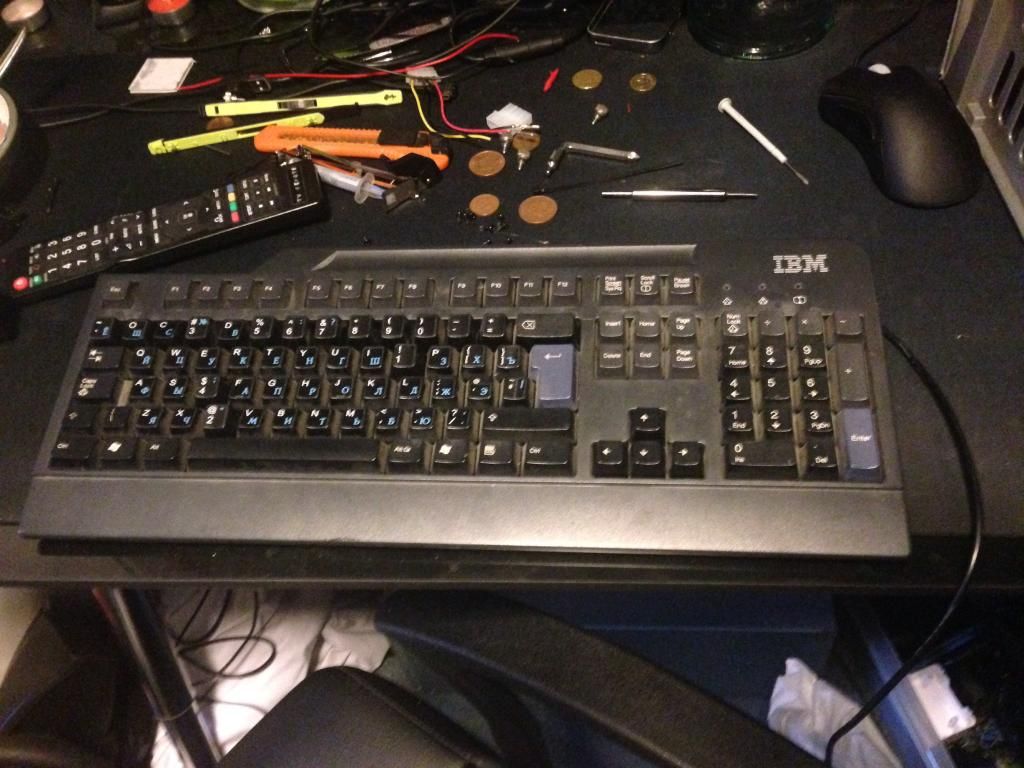
I began by dismantling the keyboard and checking that I could actually remove everything before painting. Thankfully I could and the power was actually connected to a PCB with a small header that was removable. After this I began to think of what colours I was wanting on the main body of the keyboard and possibly what keys I would want to paint. In the end I decided on the body being white and the keys that I was painting to be florescent pink, and what a good idea that was .
.
I began by preparing the keyboard by painting it with a couple of layers of primer (I know it's red but it was the only stuff that I had to hand).
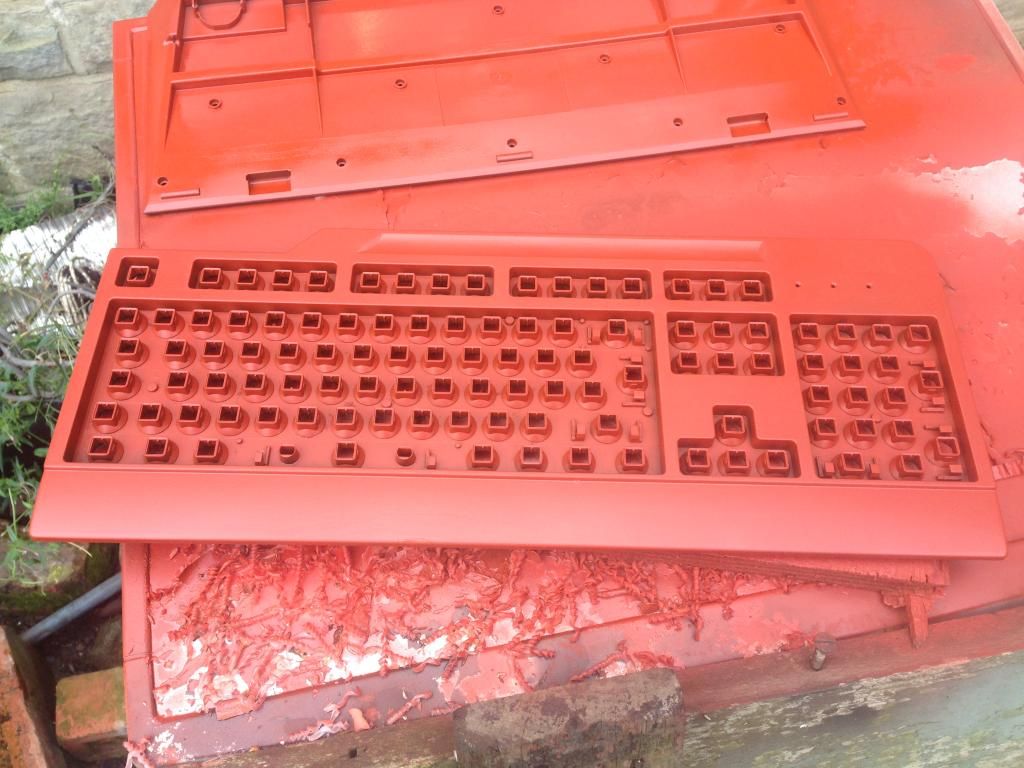
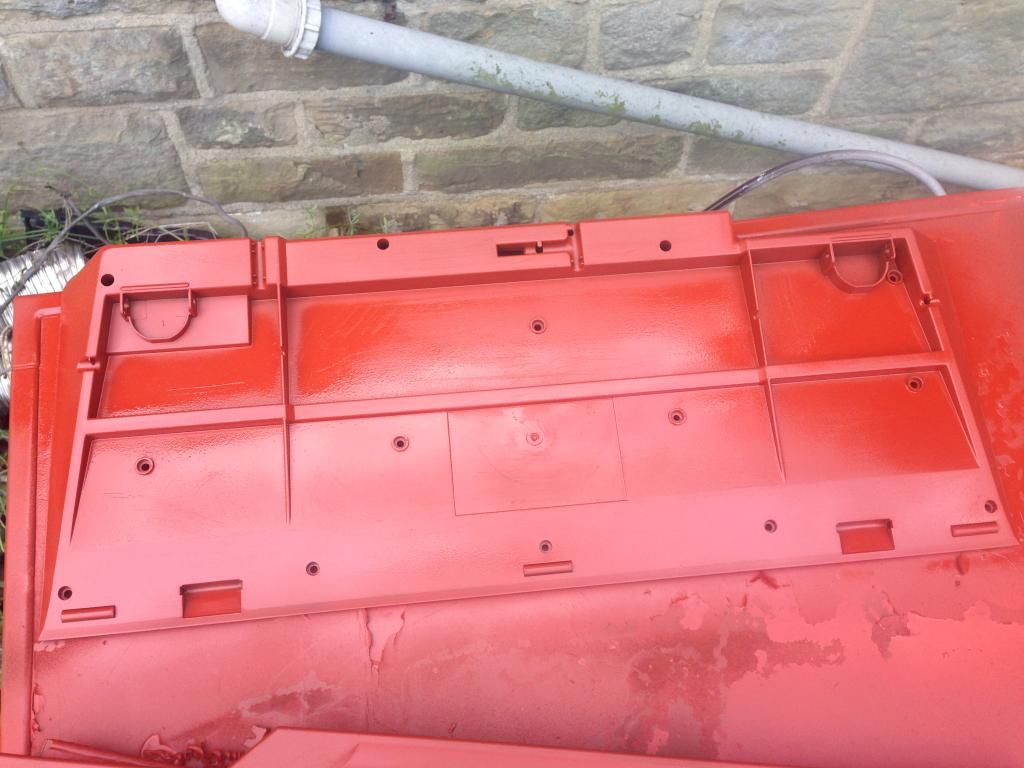
The keys were done in much the same way so I don't think there is much point in me showing the pictures. I decided on painting the WASD keys, space bar and the arrow keys and they turned out really well (apparently I didn't take a picture of them on their own after I had painted them).
After that I coated each side of the cover with 4 coats of white paint. The paint itself is gloss but the texture of the keyboard makes it so that the light is broken up in such a way that it looks almost matte, if you get what I mean .
.
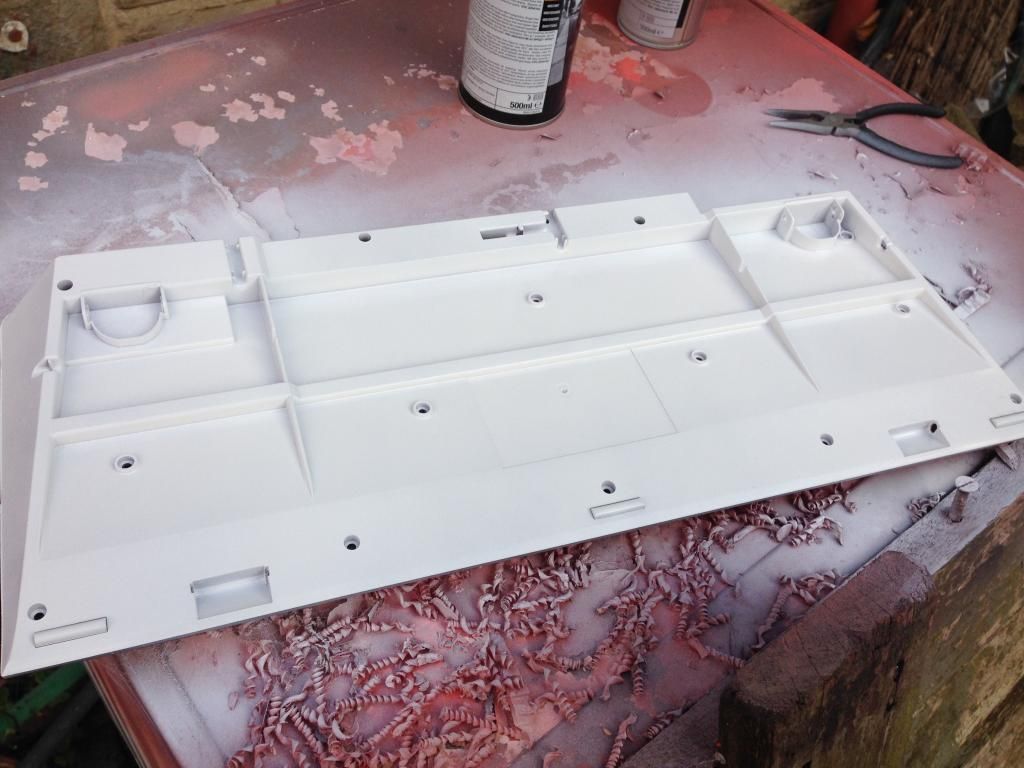
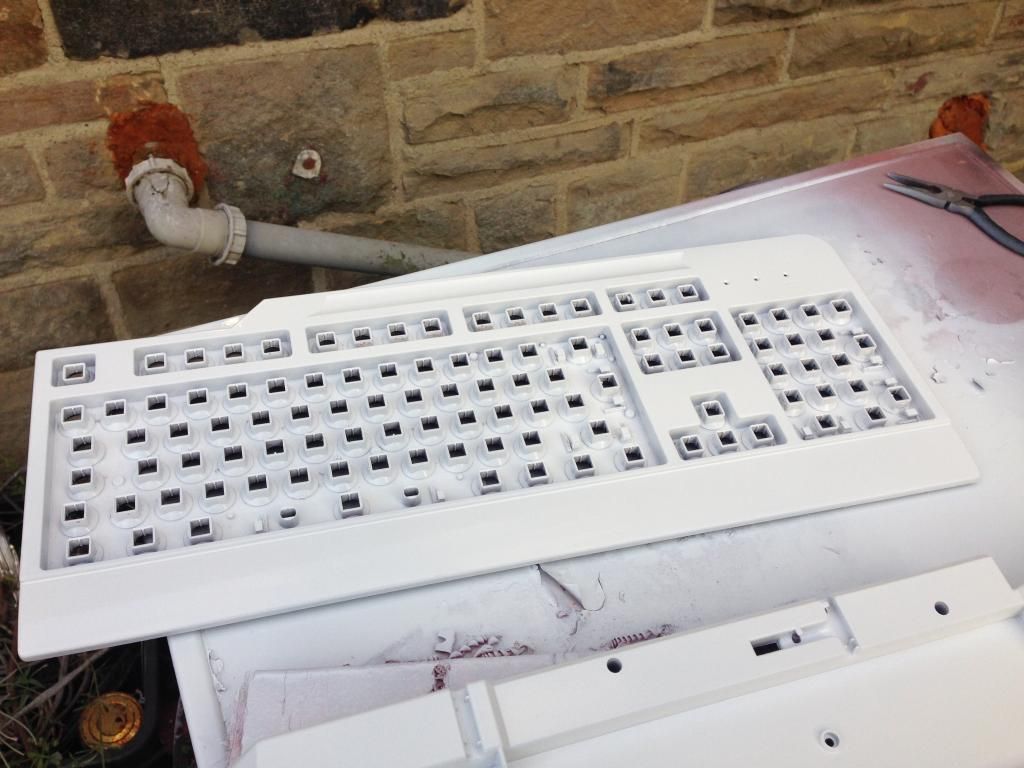
And as you can see, the IBM logo and the lock LED signs are still visible through the paint and still have a slight texture to them.
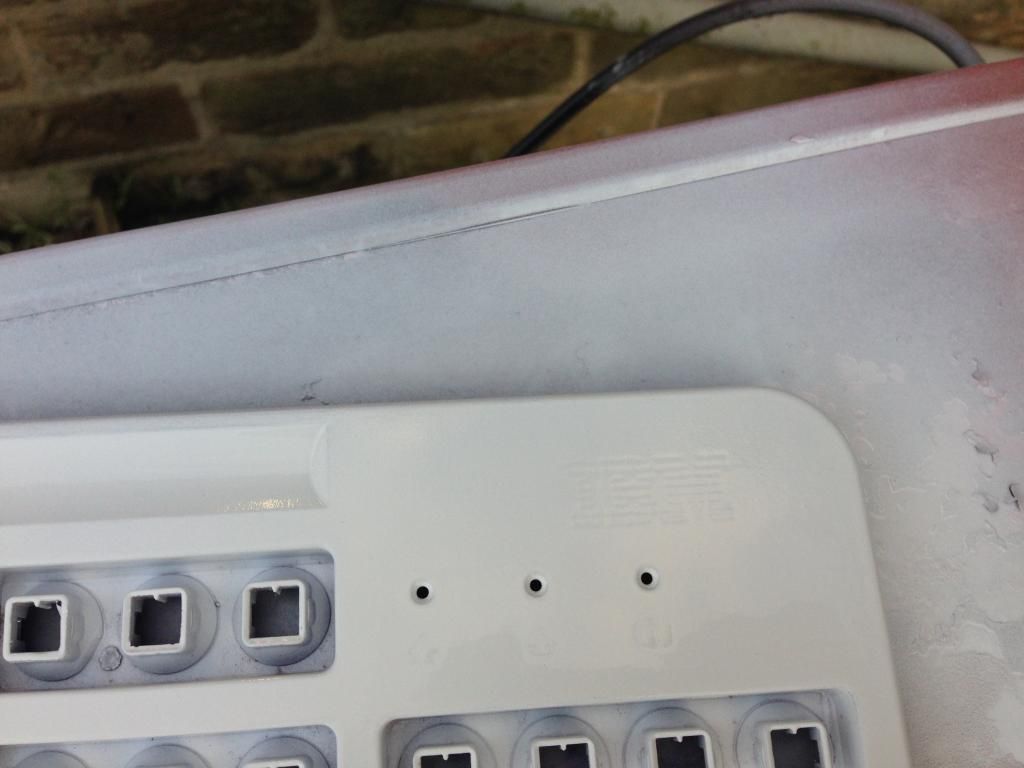
And finally, after about 5 hours, I had finished (this stage atleast). I also braided the cable, although that I also forgot to photograph ^_^.
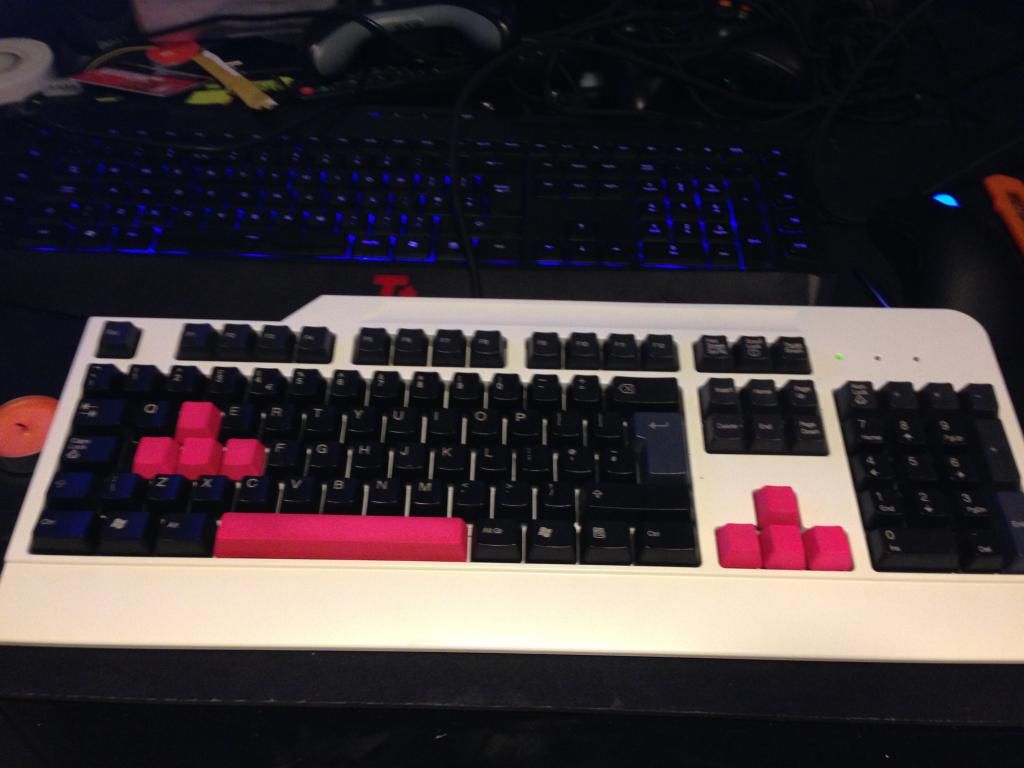
Although the keyboard is old, PS/2, plastic and membrane it's still one of the best feeling keyboards I've ever used. The tactility of the keys is just enough that they're not sloppy but are not so much that they are hard to press and require more force than is necessary.
Also another question I have is can I somehow hook up LED's to the keyboard in some way? I had the crazy idea that I could possibly hook up the backlight LED's to the num lock or scroll lock LED, although I'm sure that there isn't anywhere near enough power going to those points to power a whole keyboards worth of LED's.
Fast forward to today when, again, I got bored (last time I got bored I put my watercooling rad in a pan of water

I began by dismantling the keyboard and checking that I could actually remove everything before painting. Thankfully I could and the power was actually connected to a PCB with a small header that was removable. After this I began to think of what colours I was wanting on the main body of the keyboard and possibly what keys I would want to paint. In the end I decided on the body being white and the keys that I was painting to be florescent pink, and what a good idea that was
I began by preparing the keyboard by painting it with a couple of layers of primer (I know it's red but it was the only stuff that I had to hand).


The keys were done in much the same way so I don't think there is much point in me showing the pictures. I decided on painting the WASD keys, space bar and the arrow keys and they turned out really well (apparently I didn't take a picture of them on their own after I had painted them).
After that I coated each side of the cover with 4 coats of white paint. The paint itself is gloss but the texture of the keyboard makes it so that the light is broken up in such a way that it looks almost matte, if you get what I mean


And as you can see, the IBM logo and the lock LED signs are still visible through the paint and still have a slight texture to them.

And finally, after about 5 hours, I had finished (this stage atleast). I also braided the cable, although that I also forgot to photograph ^_^.

Although the keyboard is old, PS/2, plastic and membrane it's still one of the best feeling keyboards I've ever used. The tactility of the keys is just enough that they're not sloppy but are not so much that they are hard to press and require more force than is necessary.
Also another question I have is can I somehow hook up LED's to the keyboard in some way? I had the crazy idea that I could possibly hook up the backlight LED's to the num lock or scroll lock LED, although I'm sure that there isn't anywhere near enough power going to those points to power a whole keyboards worth of LED's.

